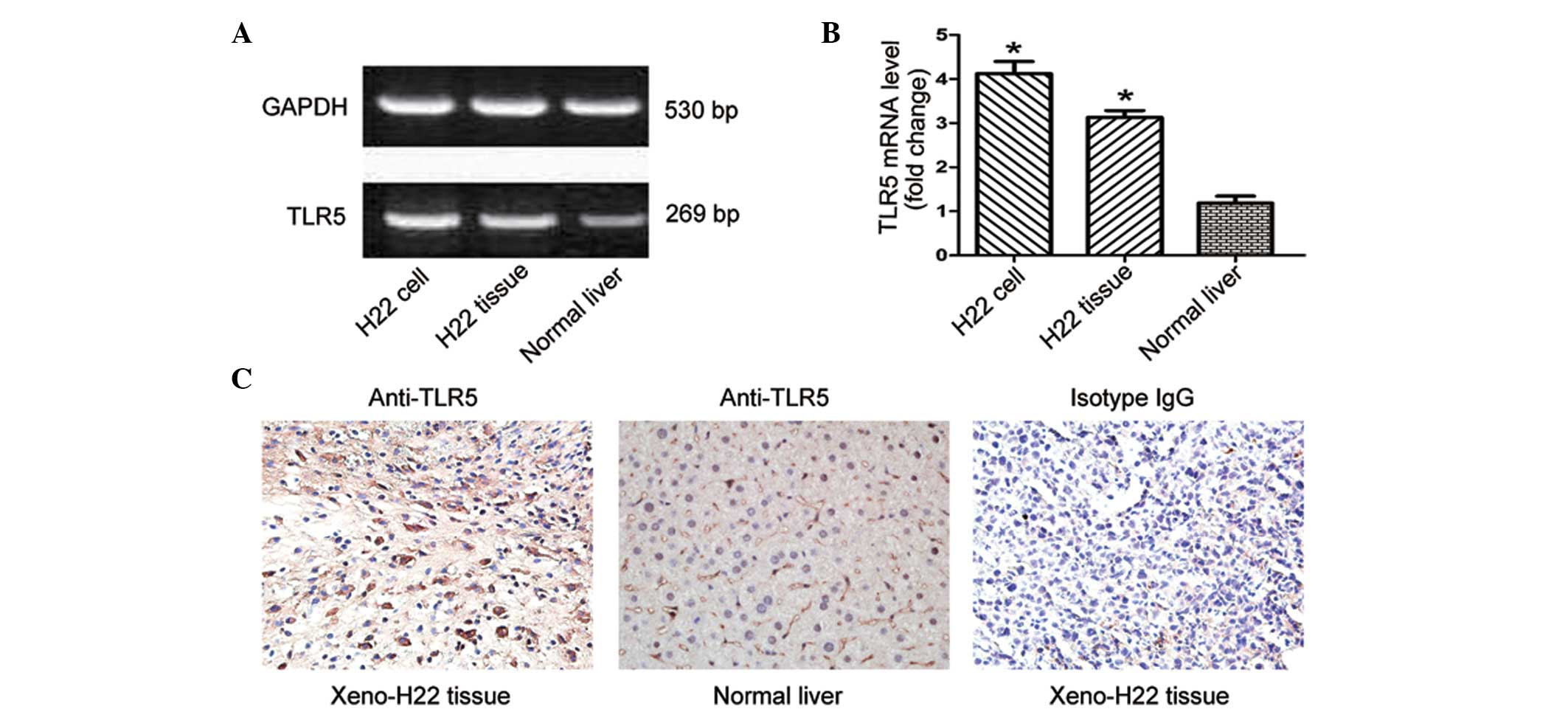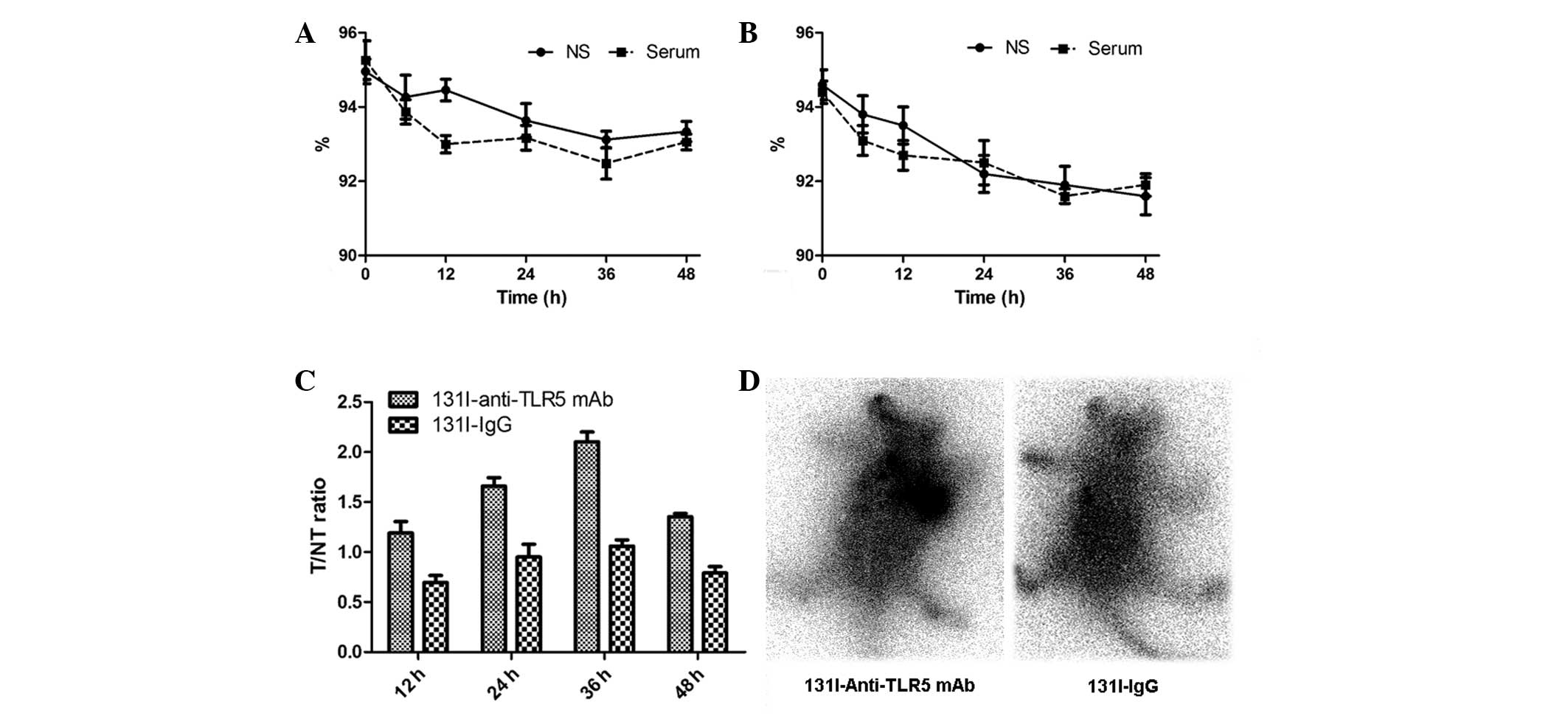|
1
|
Venook AP, Papandreou C, Furuse J and de
Guevara LL: The incidence and epidemiology of hepatocellular
carcinoma: a global and regional perspective. Oncologist. 15:5–13.
2010. View Article : Google Scholar : PubMed/NCBI
|
|
2
|
Jemal A, Bray F, Center MM, et al: Global
cancer statistics. CA Cancer J Clin. 61:69–90. 2011. View Article : Google Scholar
|
|
3
|
Bruix J and Sherman M; the American
Association for the Study of Liver Diseases. Management of
hepatocellular carcinoma: an update. Hepatology. 53:1020–1022.
2011. View Article : Google Scholar : PubMed/NCBI
|
|
4
|
Kutikhin AG: Association of polymorphisms
in TLR genes and in genes of the Toll-like receptor signaling
pathway with cancer risk. Hum Immunol. 72:1095–1116. 2011.
View Article : Google Scholar : PubMed/NCBI
|
|
5
|
Roelofs MF, Boelens WC, Joosten LA,
Abdollahi-Roodsaz S, Geurts J, Wunderink LU, et al: Identification
of small heat shock protein B8 (HSP22) as a novel TLR4 ligand and
potential involvement in the pathogenesis of rheumatoid arthritis.
J Immunol. 176:7021–7027. 2006. View Article : Google Scholar
|
|
6
|
Jiang D, Liang J, Fan J, Yu S, Chen S, Luo
Y, et al: Regulation of lung injury and repair by Toll-like
receptors and hyaluronan. Nat Med. 11:1173–1179. 2005. View Article : Google Scholar : PubMed/NCBI
|
|
7
|
Cook DN, Pisetsky DS and Schwartz DA:
Toll-like receptors in the pathogenesis of human disease. Nat
Immunol. 5:975–979. 2004. View
Article : Google Scholar : PubMed/NCBI
|
|
8
|
Killeen SD, Wang JH, Andrews EJ and
Redmond HP: Exploitation of the Toll-like receptor system in
cancer: a doubled-edged sword? Br J Cancer. 95:247–252. 2006.
View Article : Google Scholar : PubMed/NCBI
|
|
9
|
Kelly MG, Alvero AB, Chen R, Silasi DA,
Abrahams VM, Chan S, et al: TLR-4 signaling promotes tumor growth
and paclitaxel chemoresistance in ovarian cancer. Cancer Res.
66:3859–3868. 2006. View Article : Google Scholar : PubMed/NCBI
|
|
10
|
Kluwe J, Mencin A and Schwabe RF:
Toll-like receptors, wound healing, and carcinogenesis. J Mol Med
(Berl). 87:125–138. 2009. View Article : Google Scholar : PubMed/NCBI
|
|
11
|
Cai Z, Sanchez A, Shi Z, Zhang T, Liu M
and Zhang D: Activation of Toll-like receptor 5 on breast cancer
cells by flagellin suppresses cell proliferation and tumor growth.
Cancer Res. 71:2466–2475. 2011. View Article : Google Scholar : PubMed/NCBI
|
|
12
|
Rhee SH, Im E and Pothoulakis C: Toll-like
receptor 5 engagement modulates tumor development and growth in a
mouse xenograft model of human colon cancer. Gastroenterology.
135:518–528. 2008. View Article : Google Scholar : PubMed/NCBI
|
|
13
|
Sfondrini L, Rossini A, Besusso D, Merlo
A, Tagliabue E, Mènard S and Balsari A: Antitumor activity of the
TLR-5 ligand flagellin in mouse models of cancer. J Immunol.
176:6624–6630. 2006. View Article : Google Scholar : PubMed/NCBI
|
|
14
|
Kawai T and Akira S: TLR signaling. Cell
Death Differ. 13:816–825. 2006. View Article : Google Scholar : PubMed/NCBI
|
|
15
|
Eiró N, Altadill A, Juárez LM, et al:
Toll-like receptors 3, 4 and 9 in hepatocellular carcinoma:
Relationship with clinicopathological characteristics and
prognosis. Hepatol Res. Jun 6–2013.(Epub ahead of print).
View Article : Google Scholar
|
|
16
|
Burdelya LG, Brackett CM, Kojouharov B,
Gitlin II, Leonova KI, Gleiberman AS, et al: Central role of liver
in anticancer and radioprotective activities of Toll-like receptor
5 agonist. Proc Natl Acad Sci USA. 110:E1857–E1866. 2013.
View Article : Google Scholar : PubMed/NCBI
|
|
17
|
Zhu K, Dai Z and Zhou J: Biomarkers for
hepatocellular carcinoma: progression in early diagnosis,
prognosis, and personalized therapy. Biomark Res. 1:102013.
View Article : Google Scholar : PubMed/NCBI
|
|
18
|
Pant V, Sen IB and Soin AS: Role of
18F-FDG PET CT as an independent prognostic indicator in
patients with hepatocellular carcinoma. Nucl Med Commun.
34:749–757. 2013.
|
|
19
|
DeNardo DG, Johansson M and Coussens LM:
Immune cells as mediators of solid tumor metastasis. Cancer
Metastasis Rev. 27:11–18. 2008. View Article : Google Scholar : PubMed/NCBI
|
|
20
|
Song EJ, Kang MJ, Kim YS, Kim SM, Lee SE,
Kim CH, et al: Flagellin promotes the proliferation of gastric
cancer cells via the Toll-like receptor 5. Int J Mol Med.
28:115–119. 2011.PubMed/NCBI
|
|
21
|
Rakoff-Nahoum S and Medzhitov R: Toll-like
receptors and cancer. Nat Rev Cancer. 9:57–63. 2009. View Article : Google Scholar
|
|
22
|
Huang B, Zhao J, Li H, He KL, Chen Y, Chen
SH, et al: Toll-like receptors on tumor cells facilitate evasion of
immune surveillance. Cancer Res. 65:5009–5014. 2005. View Article : Google Scholar : PubMed/NCBI
|
|
23
|
Szczepanski MJ, Czystowska M, Szajnik M,
et al: Triggering of Toll-like receptor 4 expressed on human head
and neck squamous cell carcinoma promotes tumor development and
protects the tumor from immune attack. Cancer Res. 69:3105–3113.
2009. View Article : Google Scholar : PubMed/NCBI
|
|
24
|
Chiron D, Pellat-Deceunynck C, Maillasson
M, Bataille R and Jego G: Phosphorothioate-modified TLR9 ligands
protect cancer cells against TRAIL-induced apoptosis. J Immunol.
183:4371–4377. 2009. View Article : Google Scholar : PubMed/NCBI
|
|
25
|
Salaun B, Coste I, Rissoan MC, Lebecque SJ
and Renno T: TLR3 can directly trigger apoptosis in human cancer
cells. J Immunol. 176:4894–4901. 2006. View Article : Google Scholar : PubMed/NCBI
|
|
26
|
Kauppila JH, Mattila AE, Karttunen TJ and
Salo T: Toll-like receptor 5 and the emerging role of bacteria in
carcinogenesis. Oncoimmunology. 2:e236202013. View Article : Google Scholar : PubMed/NCBI
|
|
27
|
Park JH, Yoon HE, Kim DJ, Kim SA, Ahn SG
and Yoon JH: Toll-like receptor 5 activation promotes migration and
invasion of salivary gland adenocarcinoma. J Oral Pathol Med.
40:187–193. 2011. View Article : Google Scholar : PubMed/NCBI
|
|
28
|
Kauppila JH, Mattila AE, Karttunen TJ and
Salo T: Toll-like receptor 5 (TLR5) expression is a novel
predictive marker for recurrence and survival in squamous cell
carcinoma of the tongue. Br J Cancer. 108:638–643. 2013. View Article : Google Scholar : PubMed/NCBI
|
|
29
|
Cai Z, Sanchez A, Shi Z, Zhang T, Liu M
and Zhang D: Activation of Toll-like receptor 5 on breast cancer
cells by flagellin suppresses cell proliferation and tumor growth.
Cancer Res. 71:2466–2475. 2011. View Article : Google Scholar : PubMed/NCBI
|
















